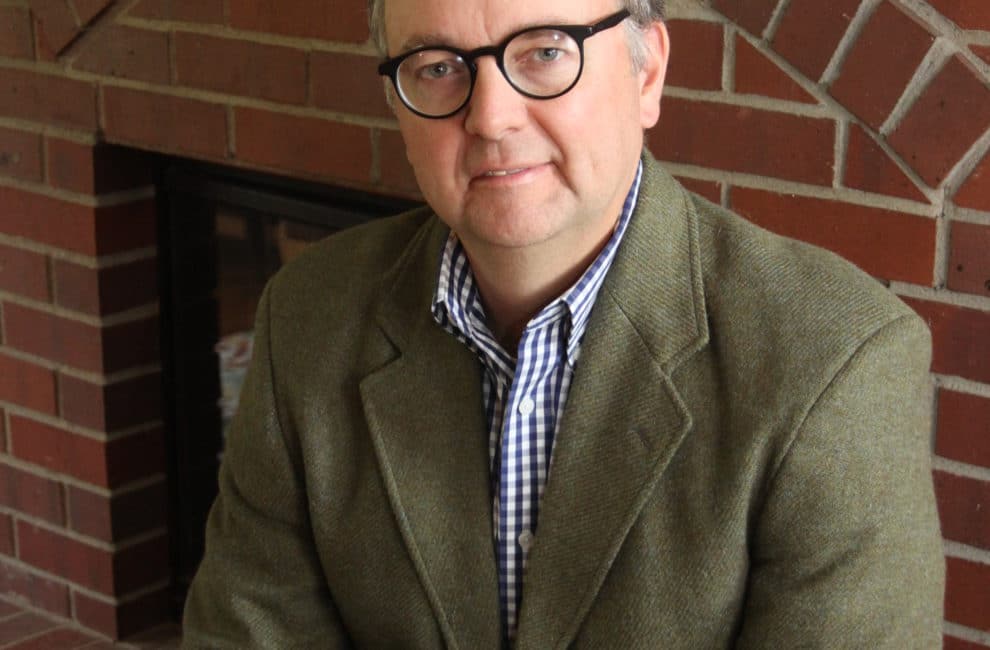
New History Book Explores “The Midwest’s Moment”
Why is the Midwest so frequently dismissed as “flyover country”? And has it always been this way?
Those are the kinds of questions that interest historian Jon Lauck, and this week he’s making two stops in Indiana to discuss them—November 8 at Ball State (7:30 p.m. at Bracken Library, room 104) and November 9 at Indiana University (noon in the Walnut Room at the Indiana Memorial Union).
Lauck, a professor and public intellectual who lives in South Dakota, will also discuss his new book: From Warm Center to Ragged Edge: The Erosion of Midwestern Literary and Historical Regionalism, 1920–1965. The title comes from a passage in The Great Gatsby, when Nick Carraway returns from World War I and realizes his home can no longer hold him. “Instead of being the warm center of the world,” F. Scott Fitzgerald writes, “the Middle West now seemed like the ragged edge of the universe.”
Lauck believes that transformation didn’t simply happen on its own. After all, soldiers like Carraway came back to a Midwest that was in many ways an economic and cultural power. But beginning in the 1920s, something changed. “Intellectuals,” Lauck writes in his book, “recast the Midwest as a repressive and sterile backwater filled with small-town snoops, redneck farmers, and zealous theocrats.”
Those intellectuals may have missed the complexities of the Midwest, but authors like Fitzgerald still saw it. (Near the end of Gatsby, Carraway reflects on the beauty of home: “the shadows of holly wreaths thrown by lighted windows” and “the real snow, our snow”—“I am part of that,” he admits.)
Through his own work, Lauck hopes to remind modern readers of the Midwest’s rich cultural past—in part because that past suggests the region could produce this sort of culture again. Indianapolis Monthly spoke to him about that, and about his upcoming visits.
IM: Your book tells the story of how outside intellectuals dismantled the Midwest and its local culture. What was the region like before they started attacking it?
JL: In the years after the Civil War, up until about World War II, it was kind of the Golden Age of the Midwest. You had a lot of very active writers in the region. From Indiana, for instance, you had Booth Tarkington, Lew Wallace, James Whitcomb Riley. This was an era before New York totally dominated publishing, before the rise of Hollywood and mass culture. So there was a lot of local culture.
The Midwest was the economic engine for the country, as well. This was the time of Henry Ford and a booming Detroit, of the steel industry and Great Lakes shipping. All the billionaires from those businesses put a ton of money back into the Midwest, building the region’s great art museums and libraries and cultural institutions. Then there were these gems of state universities, Indiana and Wisconsin and Michigan and their network of regional historians. This was the Midwestern moment.
IM: How did intellectuals attack all this?
JL: There was a group of critics, Easterners who didn’t think much of the provinces, who spurred on this snide attitude toward the Midwest. It was H.L. Mencken who said of Willa Cather, “I don’t care how well she writes, I don’t give a damn what happens in Nebraska.” That sums up a lot of these critics’ views.
In particular, there was this idea of a “revolt from the village”—that Midwestern novelists weren’t interested in their region but were instead critics of it. I taught authors like Fitzgerald and Sinclair Lewis and Sherwood Anderson this way for a lot of years, and that’s how the major textbooks still treat it. But then I started going back and analyzing this “revolt,” and it turns out it is absolute baloney. Rereading novels like Lewis’s Main Street, and going back through the authors’ letters, I saw that they weren’t revolting—that they loved many parts of their home. We have to drill it into the heads of people who teach history surveys and English 101 that this old idea is not true.
IM: Is there any truth to Mencken et al.’s critique of the Midwest?
JL: No region is perfect. Obviously I’m not saying the Midwest is a flawless paradise. I just think the criticisms from the past have been wildly exaggerated. Most of the critical and academic world today is controlled by people not from the region, so they’re still willing to believe that. I think these attitudes persist. They might even be a little stronger these days.
IM: What should Hoosiers expect from your events?
JL: It’s geared toward a general audience. I’m going to do a PowerPoint—a mini-history of the region where I try to explain why the Midwest is unique compared to other regions. I’ll also talk about the decline of Midwestern studies. I’m going to make the case for why we need it, for why local culture is valuable.
IM: Your book focuses on the Midwest as a whole, but what about the differences between the various states?
JL: The Midwest isn’t just flat and uniform. It’s a very diverse region, and that’s one of the reasons I think it is worth studying. Indiana is the most southern Midwestern state, which makes it different than Minnesota or Wisconsin. Southern Indiana is a lot different than Gary, and the old Catholic places in Indiana are different than Muncie. There are a lot of nuances to it. It’s not just boring flyover country.






